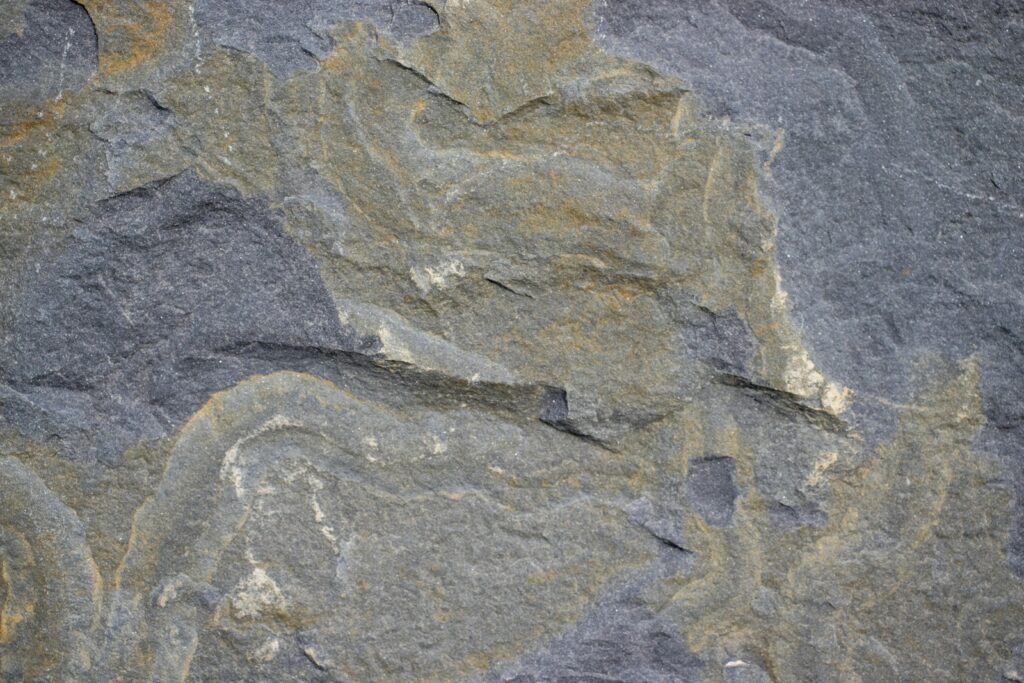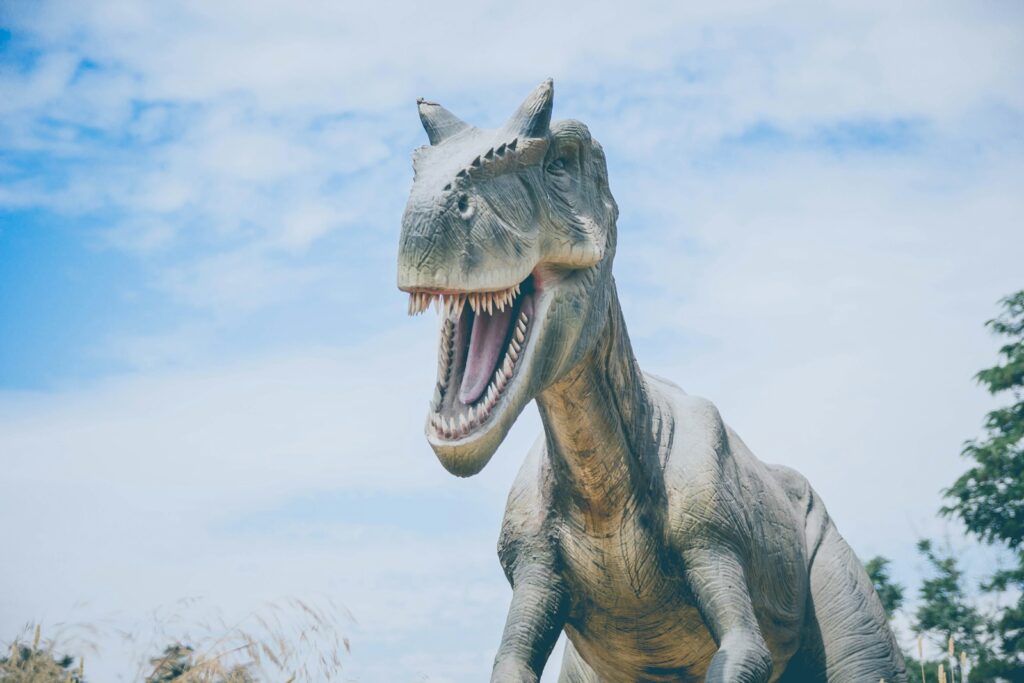Imagine a creature so massive that it shook the ground with each step, weighing as much as a dozen elephants combined. This wasn’t a monster from mythology but a real animal that once roamed our planet. Dreadnoughtus schrani, aptly named after the virtually impregnable early 20th-century battleships, represents one of paleontology’s most spectacular discoveries.
Unearthed in Argentina’s Patagonia region in 2005, this colossal sauropod has revolutionized our understanding of titanosaurs and pushed the boundaries of how large land animals could evolve. As we explore this prehistoric titan, we’ll discover how this plant-eating behemoth dominated its ecosystem through sheer size, challenging our comprehension of biological limits and offering fascinating insights into the Cretaceous period.
The Discovery That Shook Paleontology

The story of Dreadnoughtus begins in the rugged terrain of southern Patagonia, where paleontologist Kenneth Lacovara and his team made a groundbreaking discovery in 2005. Unlike many dinosaur finds that consist of mere fragments, the Dreadnoughtus specimen was remarkably complete, preserving approximately 70% of the bones behind the head. This exceptional preservation provided scientists with an unprecedented look at titanosaur anatomy, with over 100 elements recovered including most of the vertebrae, pelvis, limbs, and substantial portions of its tail.
The excavation process spanned four field seasons and required extraordinary efforts to extract the massive fossils from their resting place. When the discovery was finally announced to the scientific community in 2014, it created immediate sensation, as the specimen represented the most complete giant titanosaur ever found, offering unprecedented insights into these mysterious behemoths that had previously been known primarily from scattered remains.
The Meaning Behind the Name

The name “Dreadnoughtus” carries powerful connotations that perfectly encapsulate this dinosaur’s imposing nature. Derived from the English word “dreadnought,” meaning “fears nothing,” the name was inspired by the revolutionary battleships of the early 20th century that rendered previous naval vessels obsolete through their superior size and firepower. Dr. Lacovara chose this name to reflect how the animal’s enormous size would have made it virtually immune to predation as an adult.
The species epithet “schrani” honors American entrepreneur Adam Schran, who provided financial support for the research. This nomenclature follows a tradition in paleontology where names often reflect a fossil’s characteristics or honor important figures. The combination creates a powerful image of an unstoppable force of nature – a creature so massive that it had nothing to fear from even the most formidable predators of its time, making it a true “dreadnought” of the Cretaceous landscapes.
Size and Scale: Breaking Records
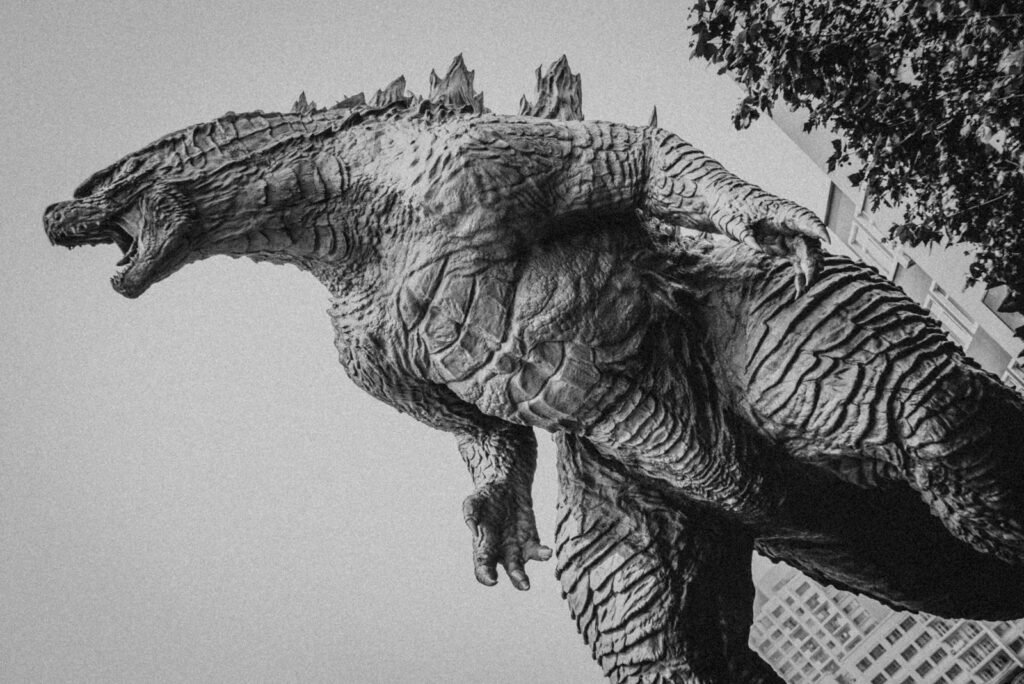
Dreadnoughtus stands as one of the most massive land animals ever discovered, with estimates suggesting it weighed approximately 65 tons (59 metric tons) – comparable to a space shuttle or a herd of elephants. This titanosaur measured about 85 feet (26 meters) from head to tail, with much of this length comprising its elongated neck and tail structures. What makes these measurements particularly significant is that they come from an individual that wasn’t fully mature when it died, suggesting that fully grown specimens could have been even larger.
The femur alone stood taller than many humans at over 6 feet (1.8 meters) in length, with a circumference that would require two adults linking arms to encircle it completely. To support this tremendous mass, Dreadnoughtus possessed extraordinarily robust limbs that resembled columns, with specially adapted bones that balanced strength with necessary weight reduction through internal air spaces. These measurements don’t just represent academic statistics – they fundamentally challenge our understanding of the biological limits for terrestrial animals and provide crucial context for understanding sauropod evolution.
Anatomy of a Giant

The skeletal structure of Dreadnoughtus reveals fascinating adaptations that allowed it to support its enormous mass while maintaining mobility. Its vertebrae contained complex networks of air sacs that significantly reduced weight without sacrificing structural integrity – a sophisticated biological engineering solution. The dinosaur’s forelimbs and shoulders were particularly robust, featuring massive attachment sites for powerful muscles that supported its neck and anterior body mass.
Dreadnoughtus possessed a whip-like tail that tapered dramatically from its thick base to a slender tip, likely serving both as a counterbalance to its long neck and potentially as a defensive weapon against predators. The rib cage was expanded and barrel-shaped, providing ample room for the extensive digestive system needed to process massive quantities of plant material. Perhaps most remarkable were its feet, which featured specialized pad-like structures that distributed its tremendous weight across soft ground, preventing the animal from sinking into the substrate – similar to how modern elephants’ feet function but engineered for even greater loads.
The Titanosaur Family Tree
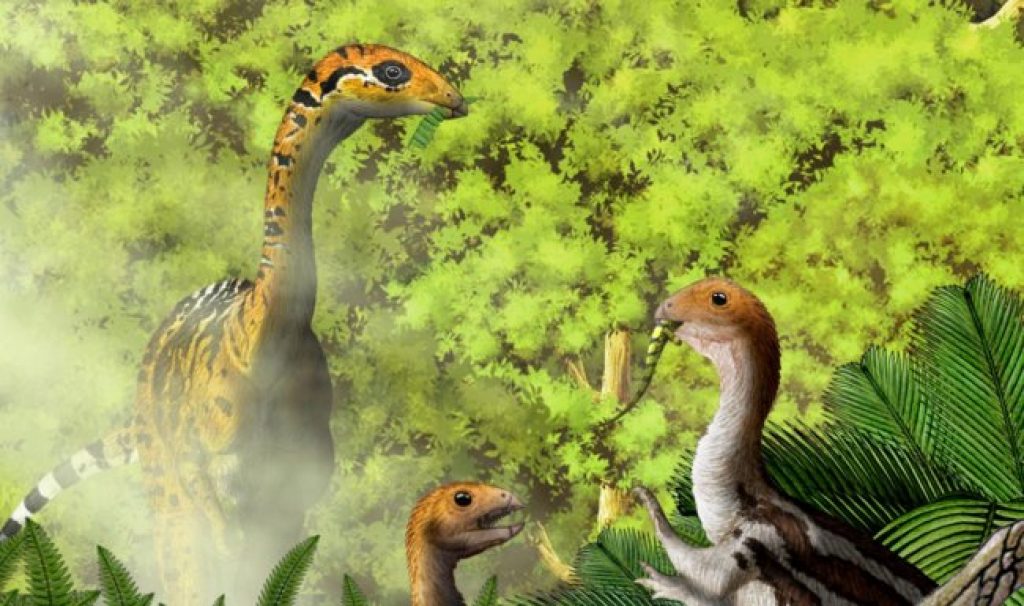
Dreadnoughtus belongs to the titanosaur group, a diverse clade of sauropod dinosaurs that dominated ecosystems worldwide during the Cretaceous period. These plant-eating giants represented the last major radiation of sauropods before the mass extinction event that ended the Mesozoic era. Within this family, Dreadnoughtus is classified as a lithostrotian titanosaur, a subcategory that includes some of the largest known dinosaurs, such as Argentinosaurus and Patagotitan. Titanosaurs as a group exhibited several distinctive characteristics, including wide-gauge limb postures, osteoderms (armor-like skin deposits), and distinctive vertebral structures.
The discovery of Dreadnoughtus has helped clarify evolutionary relationships within this complex family tree, suggesting close kinship with other South American giants while exhibiting unique anatomical features that set it apart from its relatives. This positioning within the titanosaur phylogeny provides crucial context for understanding sauropod distribution patterns across the ancient supercontinent Gondwana and highlights the remarkable evolutionary success of these animals in Late Cretaceous ecosystems.
Diet and Feeding Habits

Sustaining a body of such immense proportions required an extraordinary feeding strategy, with Dreadnoughtus likely consuming hundreds of pounds of vegetation daily. As a titanosaur, it belonged to a group of non-selective bulk feeders that used their peg-like teeth to crop plant material rather than chew it, relying instead on gastroliths (stomach stones) and extended fermentation to break down tough plant matter. The long neck of Dreadnoughtus served as a crucial adaptation, allowing it to access vegetation across a wide radius without moving its massive body, significantly reducing energy expenditure while maximizing feeding efficiency.
Analysis of the jaw structure suggests relatively weak bite forces compared to body size, indicating that Dreadnoughtus likely focused on soft, high-growing vegetation rather than tougher plant materials closer to the ground. This feeding strategy would have minimized competition with smaller herbivores while allowing Dreadnoughtus to exploit food sources inaccessible to other dinosaurs, effectively creating its own feeding niche within the ecosystem through its extreme size.
Habitat and Geographic Range

The environment that Dreadnoughtus called home approximately 77 million years ago was dramatically different from modern Patagonia. Geological evidence from the Cerro Fortaleza Formation, where the fossils were discovered, indicates a floodplain ecosystem characterized by meandering rivers, lush vegetation, and seasonal rainfall patterns. This region experienced a relatively warm climate during the Late Cretaceous, supporting diverse plant communities that could sustain megaherbivores like Dreadnoughtus. The habitat likely featured a mosaic of open areas and forests, providing both grazing opportunities and potential shelter.
While direct evidence of Dreadnoughtus has only been found in Argentina thus far, related titanosaurs had wide geographic distributions across the southern supercontinent Gondwana, suggesting these animals may have ranged across much of what is now South America. The sedimentary context of the fossils indicates that this particular individual died in a floodplain area, possibly trapped in mud during a flooding event – a common fate for large animals in riparian environments and one that contributed to the exceptional preservation of this specimen.
Growth and Development
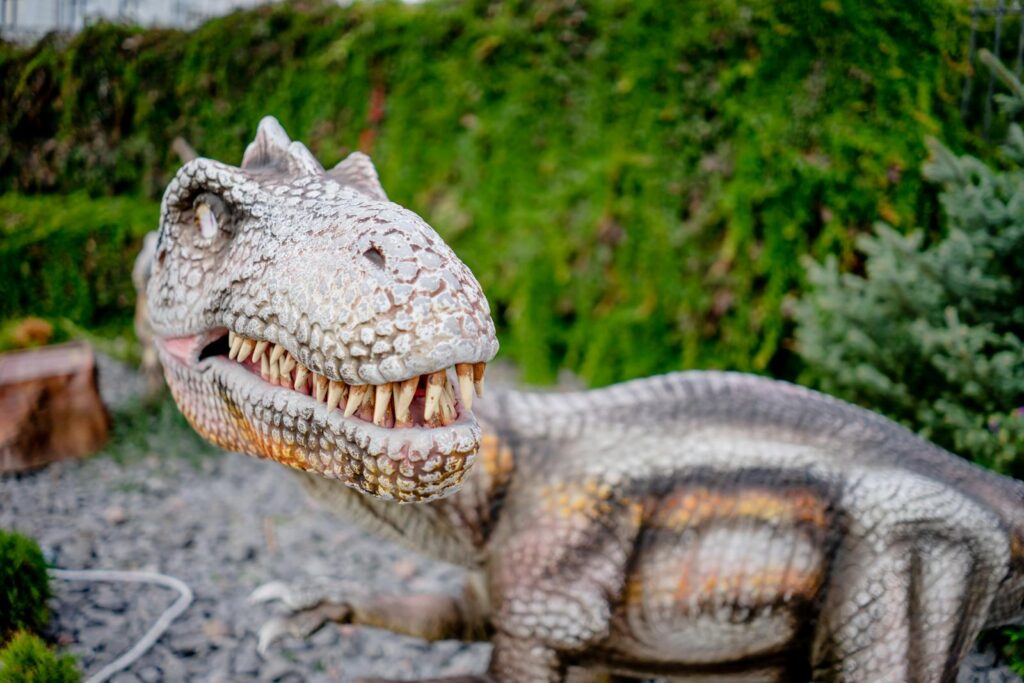
One of the most fascinating aspects of Dreadnoughtus is what it reveals about titanosaur development and longevity. Despite its enormous size, histological analysis of bone tissues shows that the type specimen had not yet reached full maturity when it died, as evidenced by the absence of an external fundamental system (EFS) in its bones that would indicate growth cessation. This discovery suggests that adult Dreadnoughtus could have grown even larger, pushing the boundaries of what we understand about maximum body size in terrestrial animals.
Growth ring analysis indicates that these titanosaurs likely experienced rapid juvenile growth, potentially adding several tons annually during their peak development phases. This accelerated growth pattern would have been crucial for quickly passing through vulnerable juvenile stages when predation risks were highest. Based on comparisons with other sauropods, scientists estimate that Dreadnoughtus may have reached sexual maturity in its second decade of life while continuing to grow for several more decades, potentially achieving a lifespan of 50-70 years under favorable conditions – a lengthy life cycle that parallels that of modern elephants and other large-bodied mammals.
Defensive Capabilities

The name “Dreadnoughtus” aptly describes this dinosaur’s primary defensive strategy: size-based deterrence. Much like modern elephants face few predation threats as adults, a fully grown Dreadnoughtus would have been virtually immune to attacks from even the largest Cretaceous predators. The sheer mass and strength of this titanosaur would make it an exceedingly dangerous target, capable of inflicting lethal damage through trampling or tail strikes. While lacking the obvious defensive structures seen in other dinosaurs such as the armor plates of ankylosaurs or the horns of ceratopsians, Dreadnoughtus may have possessed osteoderms (bony deposits) embedded in its skin that provided limited protection against attacks.
The dinosaur’s long, muscular tail could potentially function as a powerful whip-like defensive weapon, creating sonic cracks or delivering devastating blows to would-be predators. Social behavior may have provided additional protection, as fossil evidence from other titanosaur species suggests these animals sometimes traveled in groups, offering enhanced vigilance and collective defense particularly beneficial for younger, more vulnerable individuals.
Locomotion and Movement

How Dreadnoughtus moved its massive body has been a subject of intense scientific investigation, with its limb structure providing crucial insights. Unlike earlier sauropods with more columnar limbs, Dreadnoughtus exhibited the wide-gauge stance typical of titanosaurs, with limbs that splayed slightly outward from the body. This posture increased stability by creating a broader base of support, a critical adaptation for an animal of such extreme mass. Biomechanical models suggest that Dreadnoughtus was capable of walking at speeds of approximately 2-5 miles per hour (3-8 km/h) – slow by human standards but remarkably efficient considering its size.
The preservation of multiple footprints from related titanosaurs indicates these animals placed their feet with precision, distributing weight evenly to prevent sinking into soft substrate. Each step would have required tremendous muscular effort, with the robust limb elements of Dreadnoughtus adapted to handle forces equivalent to supporting several elephants. While capable of traversing considerable distances to find food or water, Dreadnoughtus likely conserved energy through efficient feeding strategies that minimized unnecessary movement, standing relatively stationary while its long neck gave access to vegetation in a wide radius.
Social Behavior and Reproduction

While direct evidence of Dreadnoughtus social behavior remains limited, comparative analysis with related sauropods offers compelling insights into potential group dynamics. Multiple titanosaur trackway sites across South America suggest these animals sometimes traveled in groups comprising individuals of various ages, indicating possible herding behavior similar to that observed in modern elephants.
Such social structures would have provided numerous advantages, including enhanced protection for vulnerable juveniles and more efficient detection of predators or resources. Reproductive biology in Dreadnoughtus likely followed patterns observed in other sauropods, with females laying numerous eggs in excavated nests, possibly in colonial nesting grounds as evidenced by titanosaur egg sites discovered in Argentina and Spain. The eggs were relatively small compared to adult body size—typically about the size of a grapefruit—with clutch sizes estimated between 20-40 eggs per female.
This reproductive strategy emphasized quantity over parental investment, with high juvenile mortality likely offset by large clutch sizes, creating a population pyramid with relatively few adults compared to juveniles – a pattern common among modern reptiles and consistent with the limited fossil evidence for adult titanosaurs compared to sub-adults.
Environmental Impact and Ecological Role

The presence of animals as massive as Dreadnoughtus would have fundamentally shaped their ecosystems through multiple mechanisms. As megaherbivores, they would have consumed enormous quantities of vegetation daily, potentially altering plant community structures and creating clearings that benefited other species. Their feeding habits likely promoted plant diversity by preventing any single species from dominating, while their movement through forests would have created pathways later utilized by smaller animals.
The digestive processes of Dreadnoughtus would have played a crucial role in nutrient cycling, with their extensive fermentation chambers efficiently processing plant material and their droppings distributing concentrated nutrients across the landscape. Each adult Dreadnoughtus likely produced hundreds of pounds of dung daily, creating microcosms of insect and fungal activity that enriched soil fertility.
Perhaps most significantly, these titanosaurs may have functioned as ecosystem engineers, modifying habitats through their physical presence much as elephants do in modern African savannas – breaking branches, pushing over trees, and creating water holes through their movements and behaviors.
Extinction and Legacy

Dreadnoughtus inhabited Earth during the Late Cretaceous period, approximately 77 million years ago, living in the shadow of the approaching mass extinction event that would eliminate all non-avian dinosaurs roughly 11 million years later. While Dreadnoughtus itself disappeared long before this catastrophic event, the titanosaur lineage persisted until the very end of the Cretaceous, representing one of the last successful dinosaur groups.
The discovery of Dreadnoughtus has profoundly influenced our understanding of maximum body size in terrestrial animals, providing crucial data points for biomechanical models that explore the upper limits of biological scaling. The exceptional preservation of this specimen continues to yield new insights as advanced technologies like CT scanning reveal previously inaccessible details about internal structures and growth patterns.
Beyond scientific significance, Dreadnoughtus has captured public imagination, featuring prominently in museum exhibitions worldwide and helping to correct outdated perceptions of sauropods as lumbering, swamp-bound creatures. Through these ongoing contributions to both science and popular culture, the legacy of Dreadnoughtus extends far beyond its physical remains, reshaping our understanding of Earth’s biological history and the remarkable adaptations that allowed dinosaurs to achieve such extraordinary evolutionary success.
Conclusion: A Window Into Prehistoric Giants
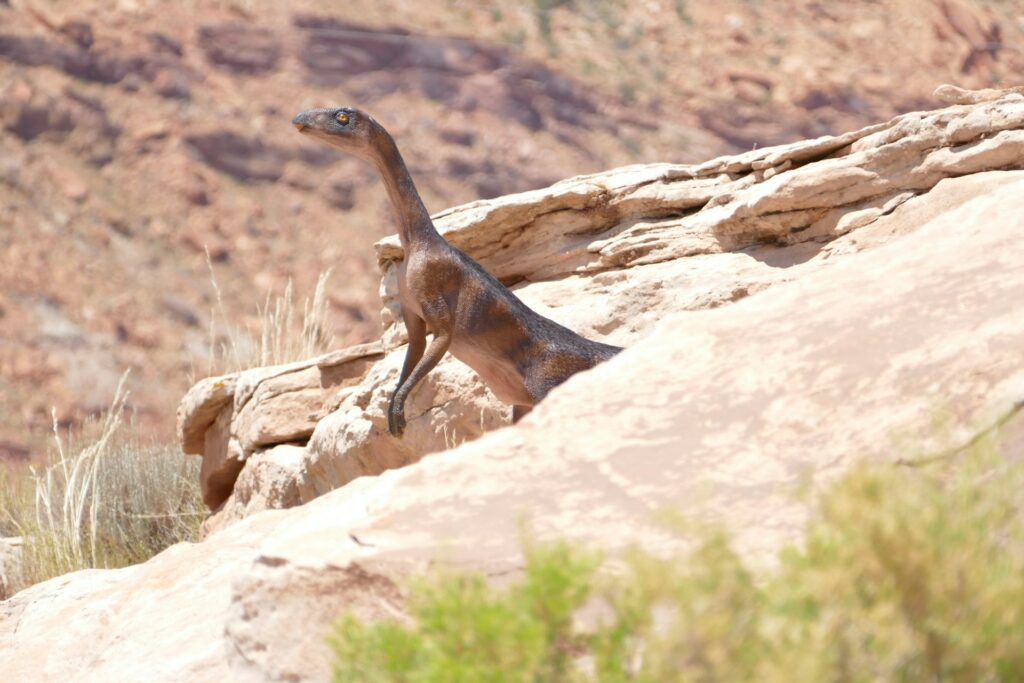
Dreadnoughtus stands as a testament to the extraordinary evolutionary pathways that shaped life during the Mesozoic era. This colossal titanosaur pushes against the very boundaries of what we understand about biological size limits, offering a glimpse into ecosystems where giants ruled the landscape. The remarkable completeness of its remains continues to provide paleontologists with invaluable data about sauropod anatomy, growth patterns, and adaptations.
As research methods advance, each examination of these fossils yields new insights about how these animals lived, moved, and functioned within their ancient environments. Beyond the scientific significance, Dreadnoughtus serves as an ambassador from a lost world, capturing public imagination and inspiring curiosity about Earth’s distant past.
In studying these magnificent creatures, we gain not only specific knowledge about dinosaur biology but also broader perspectives on evolution’s capacities to produce extraordinary adaptations in response to ecological opportunities. The story of Dreadnoughtus reminds us that despite all our technological achievements, nature has engineered wonders that still leave us in awe – living tanks that once shook the ground upon which we now stand.


